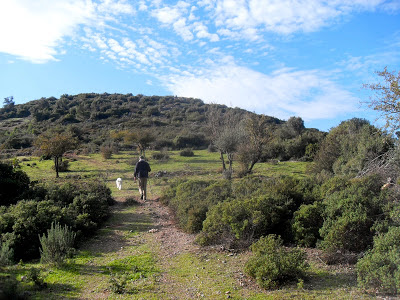
When Christmas morning starts with a sky this blue, it would be sacrilege to waste the day getting hot and bothered in a kitchen. Tradition was thrown to one side and we headed off to Tuzla to walk the dog and watch the flamingoes. Lunch was fish and salad beside the sea. Not a turkey in sight.
The first Christmas lunch I cooked in Turkey was in 1983. My parents had arrived a few days before to celebrate with us and we soon twigged that finding a turkey in the butchers was not going to happen. My soon-to-be husband hadn't met my family before and my folks hadn't ever been to Turkey but my father still remembers the day we went on the "turkey hunt" as a surreal experience and it proved a good ice-breaker. We heard that a farmer in Turgutreis had raised a few birds and was willing to sell them. In those days Turgutreis was a one road town and we had to head inland among the orange grove paths to find the farm. After much meandering we did track down the small holding and the farmer was willing to part with a bird. He lead us through his gardens, showed us where the turkeys were grazing and said we could take our pick. We did and then had to catch it. I think the farmer should have paid us for the hilarity we obviously caused him but we did eventually get our prize. I'd only been cooking for a couple of years and plucking and gutting a turkey was not something I'd done before, but between us, we managed it. It didn't much resemble the traditional roast we were used to. It must have done a lot of running in its short life because apart from two large legs, there wasn't much meat on the carcass and it only just fed the 4 of us. Since that lunch, I've never been that keen on turkey meat so I am always happy to give tradition a miss on Christmas day.
















.jpg)







































